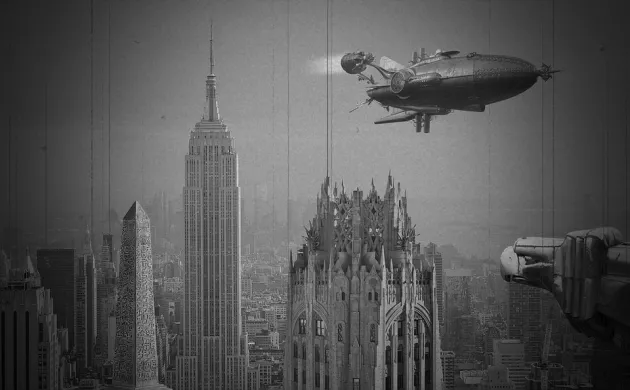Vintage Sci-fi between 1818 and 1912
Published on 13th January 2021

Science fiction is often considered to be a relatively modern genre, however it’s roots can be traced back to the early 19th century. Here’s some early examples of the genre dating from between 1818 and 1912 that can still be enjoyed today courtesy of BorrowBox from the comfort of your incredibly futuristic mobile device in the 21st century.
The first book regarded as true science fiction is Mary Shelley’s ‘Frankenstein’ from 1818. Often regarded as horror, ‘Frankenstein’ qualifies as science fiction as it rationalises the creation of the monster as being the result of laboratory experiments by a dedicated scientist. The act of unleashing powers that humanity was never meant to harness went on to become a cliché of the genre.
In the mid 19th century, the genre became popularised by the works of French author Jules Verne. One of the best known of Verne’s novels is ‘Journey to the Centre of the Earth’ from 1864, a well told adventure story about three men taking a trip into the depths of the earth and encountering many perils along the way including a subterranean ocean, prehistoric monsters, and even a giant humanoid.
Towards the end of the 19th century, British author H.G. Wells wrote several novels that helped to shape science fiction into its modern form. ‘The Time Machine’ from 1895 is one of his best known works and is the first example in literature of a scientist building a vehicle to transport himself through time. The nameless time traveller eventually ends up in the far future, finding humanity now split into two species, the gentle and childlike Eloi, and the subterranean, monstrous Morlocks.
Possibly the most well known work by H.G. Wells is his 1898 novel ‘The War of the Worlds’. This tale of a Martian attack on Earth went on to become enormously influential to the genre and features the first examples in fiction of an alien invasion, laser weapons, terraforming, and hints of biotechnology. It was also responsible for the popularisation of the ‘bug eyed monster’ as a sci-fi cliché, and features chillingly realistic descriptions of mass panic, poison gas attacks, the breakdown of society, and deserted, bombed out cities.
Sir Arthur Conan Doyle is most famous for the creation of Sherlock Holmes, although only one of the Holmes stories - ‘The Adventure of the Creeping Man’ - qualifies as borderline science fiction. For his more explicitly science fiction stories, Conan Doyle used the character of Professor George Edward Challenger. Professor Challenger appeared in a number of stories, including ‘The Poison Belt’ and ‘When the World Screamed’, but the first and best of his adventures is ‘The Lost World’ from 1912, an adventure tale detailing the discovery of still living dinosaurs on a isolated plateau in the uncharted Amazon.
Access eBooks/eAudiobooks on your phone, tablet or reader. Once you have installed the app, search for Dublin in the ‘Library’ field provided and then sign in using your library membership card number and PIN.
Watch our how to video on Borrowbox. Members of other library authorities will need to log in using a different link.
Submitted by Sean in Ballymun library.